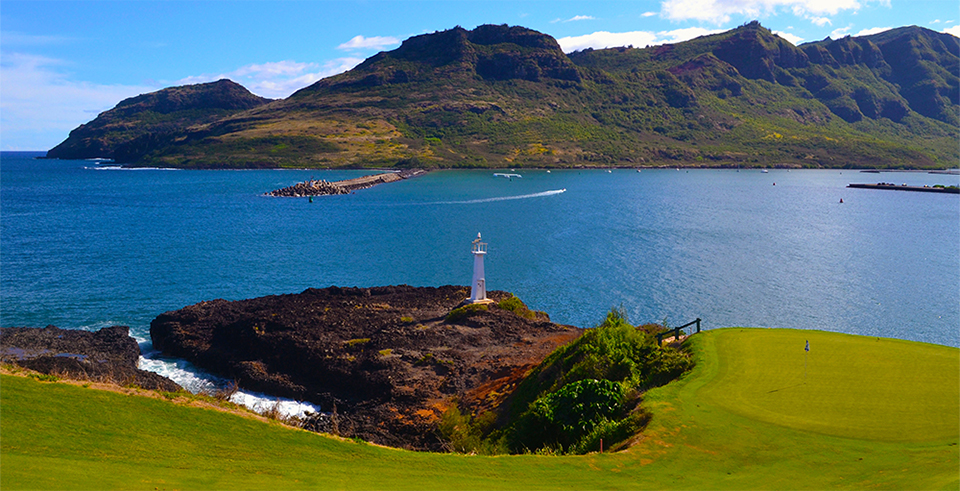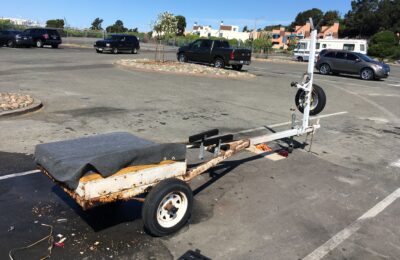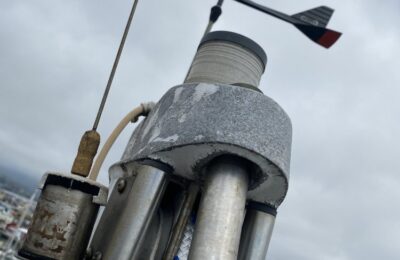Sixteen months from now, prepared and well-planned, setting sail from San Francisco to Hawaii. Somewhere between bucket list and midlife crisis, tilting at windmills and early retirement. In all likelihood by myself, at least that’s my current plan. But how does one begin to “eat an elephant” such as this? More specifically, how should I begin to plan such an endeavor for myself? Here are some thoughts, offered for my own future reference, with your input welcomed, in a “cheaper than therapy”/public accountability.
It’s a lot to take on, at least it feels that way for someone with my day-sailing-dinghies kind of background. The closest analogue in my own life from which to draw is when I swam the English Channel in 2009. I signed up with a certifying organization, trained for a year, and received a lot of generous guidance from other people who had completed the same task. My wife and my dad were on an observation boat the entire time. It took me nearly fourteen hours, and it was both awful and awesome. If any of my sailing adventures leave me up to my neck in a shipping channel, while vomiting and defecating , it won’t be my first experience doing so. I feel compelled to add that I understand sailing from North America to Hawaii presents potential scenarios no amount of human swimming can overcome. But here are some thoughts on how I did the swimming and how I hope to do the sailing:
- Set a time/place goal and start organizing. Why June? It seems like when most people sail from California to Hawaii, based on trade winds etc. My kids will be out of school. My wife works nearly full time.
- Get buy-in at home. I had originally hoped to go on this trip this summer (June 2020). That idea was shot down by my wife for scheduling reasons, and is probably entirely for the best. I lofted the idea though, and let her get a little comfortable with it. She’s not overjoyed about the prospect of me leaving her with our boys for weeks on end, but the “Hey, we all get to hang out in Hawaii for a while at the end” is fairly compelling. I basically have her agreement at this point. (Getting the boat home from Hawaii is another matter, still in the ‘To Be Determined’ category).
- Seek the advice of experts. I’m fortunate to be in the San Francisco area, home to the Singlehanded-Sailing-Society, (https://www.sfbaysss.org/) the host organizers of the biannual Single Handed Trans Pac (SHTP) race. Odd numbered years the SSS holds a preparatory race they call the “Long Pac” (Long Pacific) wherein sailors head directly west a distance of (I think) 200 miles, turn around and come back. Even years are the races from California to Hawaii, the actual SHTP. The SSS holds a series of great seminars/chats, most of which are video-recorded and made available on-line. It’s great to be in a room with experienced people who have done this ‘event’ over and over again and have wisdom to share. I have no interest in racing to Hawaii. I want to “cruise” to Hawaii. I am unfortunately “off” by a year, and I hope to do a “LongPac” style practice race this summer (when these other folks are actually racing to Hawaii) and then the long sail next summer, when no SHTP will take place.
- Is the boat ready? An eating-the-elephant issue. Incremental steps necessary to ensure the boat is as safe as it can reasonably be to depart. Again, I am referring to the framework from the Single handed TransPac race. https://www.jibeset.net/show.php?RR=JACKY_T00254104&DOC=X0&TYP=pdf
- There is a rubric of safety rules for inspections I hope to apply as a test of the readiness of my own boat. (Communication requirements, emergency equipment requirements, backup rudders, equipment, readiness for a storm, etc. etc.)
- It’s also good motivation to ensure that all of the “cruising” systems on my boat are working well. As yet, I am gaining confidence in the engine and sails in my boat. Next up is an electronics upgrade with better communication and navigation systems.
- I haven’t focused on the conveniences of fresh water, toilet/holding tanks. Plenty of work to be done to make sure those are functional. That said, after attending a SSS seminar I have learned, there are plenty of people who go to sea with a bunch of plastic jugs of water for hydration and a bucket and a funnel with a flex pipe for personal convenience.
- Am I ready? More than anything else, I need to practice sailing. Light winds, heavy winds, navigating, big waves, small waves. Can I make everything on the boat work the way it is supposed to? Do I have all of the right back-up plans? Tools, packing lists. Can I make a sandwich at sea? How about some chili? What fun to embark on these challenges.
Somewhere between now and June 2021 I’m hoping to accomplish these intermediate steps:
- Overnight trip down the coast to Half Moon Bay, by myself or with a buddy. Spend the night in a guest slip and then fight back north the following day to the Golden Gate. Practice coastal navigating, arriving at an unfamiliar port.
- Get my entire family on the boat for an ‘easy’ overnight somewhere in the bay. There are 5 of us, so this would be a good test of the water, sanitation systems, etc. I haven’t prepared any food on the boat yet (beyond a picnic lunch), so if we can manage a simple dinner/breakfast combo, that will make for good memories, (and testing of systems, need for cleanliness, etc.)
- More ‘formal’ training. I’m signed up for a week long class this spring (ASA 104/114, Bareboat cruising/Catamaran cruising) with some strangers. One of the ‘side benefits’ I hope to gain on this project is a level of comfort sufficient to go and bareboat charter a sailboat. I’m signed up for a ‘Safety At Sea’ seminar this spring also. Learning from the experience of others in these areas seems preferable to ‘trial and error.’
- Chartering a boat with the family this summer. We’ve signed up for week in the Mediterranean with a skipper. I feel like I’m chickening out with a hired skipper, but I have no idea how to do a med-tie, and abroad in a marina filled with perhaps fancy boats and an unfamiliar insurance/legal framework does not seem like a good place to start. Also, if my family associates sailing with “Super-Stressed Dad” they won’t want to go sailing with dad very much. Let’s ease into this.
- A ‘LongPac’ equivalent event – 400 miles round trip, offshore. Alone, out over the course of at least two nights with Plan B/C/D equipment readiness sufficient.
- Racing practice with friends. I’ve never done any real racing, and I can’t help but think that I will learn some good tricks and techniques in doing so. My challenges here are scheduling around Cub Scout meetings, Little League and Basketball coaching. Occasional real business work. I need to prioritize this if it is ever going to happen.
I’m trying to organize my boat repairs/rehab around my “Hawaii Trip” by answering the following question.
Is this something I need to understand to safely make an offshore passage?
If yes:
I should do the work, care about it, and understand it.
Sails and rigging. Winches and cleats. Safety equipment and how to use it properly. Electronics and how they work together. Safe water and food. Engine familiarity.
If no, I should hire someone else to do it or ignore it.
Boat cosmetics, hull-polishing, varnishing, sewing stuff. I care about my boat not looking so awful that it doesn’t feel dreary for my family. Otherwise, I haven’t read many accounts of great sailing trips where at the end, the main conclusion is that the craft had nice brightwork. I don’t mean to disparage these cosmetic efforts. I myself enjoy making things look nice too. I just need to practice sailing a lot more than I need to sand and varnish handrails, etc..
Who knows. Being at sea, alone, 1000 miles from anywhere? Seems a little scary. You can choose between claustrophobia below, or agoraphobia on deck. Maybe I won’t get past the overnight trip to Half Moon Bay, or anchoring practice in San Rafael. But we’re all getting ready to die. Why not swing for the fences on a few projects along the way?



